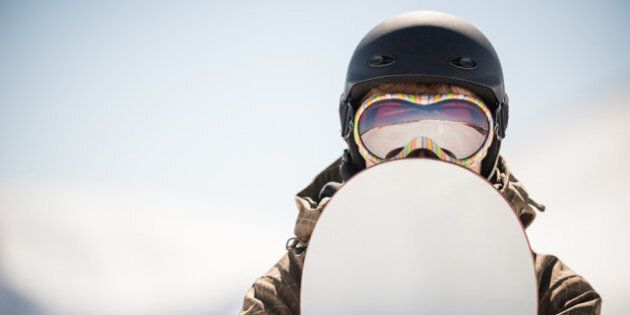
The next time you're going down a ski hill, play close attention to your legs.
Or, for your overall health, the better question might be, how do your joints feel? Geoff Girvitz, owner and head strengthening coach of Bang Fitness, based in Toronto, Ont., says even though winter time brings out the skiers, snowboarders and outdoor runners, many forget to exercise between activities.
While skiing and snowboarding are both good ways to have fun and burn calories during chillier months, not working on your leg muscles and joints could lead to added soreness or joint injuries.
"There is an inherent risk to many outdoor sports (although not exclusive to winter sports). If we're only worried about health, we may be motivated to make more conservative choices," Givitz tells The Huffington Post Canada.
Besides a desire for overall health, there are many reasons why fitness lovers tend to work out in the winter. Runners, for example, find it more challenging (and love the empty roads), he adds.
And the key to fighting the winter blues may also rely on winter activities. According to the Mother Nature Network, winter exercises can help reduce seasonal affective disorder, help you get more fresh air and put you in a better mood.
If you're still not convinced, think about the calories. On average, cross-country skiing can burn about 545 calories per hour, ice hockey, ice skating, snowboarding around 500, and even shovelling that snow from your driveway can burn off 400 calories.
"The total number of calories burned depend on a number of factors, including body weight, and of course, intensity. However, skiing and skating tend to equate to jogging at about five miles per hour," Girvitz says.
SEE: Love to ski and snowboard? Make sure you're exercising in between:
Goblet Squat With Pulse:
THE GOODS: "Skiers and snowboarders aren't spending equal amounts of time in all positions. It’s important to develop stability and endurance at the joint angles they’ll need it most," says Geoff Girvitz, owner and head strengthening coach of Bang Fitness, based in Toronto.
THE SET-UP: Stand with your feet shoulder-width apart. Cup the top part of a dumbbell in both hands at chest height. Ensure that your knees are not locked out.
MOVEMENT: Initiate the movement by moving your hips backwards. Continue to sit back and down, until your elbows are inside your knees (or close). Slowly push the dumbbell away from your body and then bring it back to your chest. This is the pulse portion. Once the pulse has been completed, drive your heels into the ground and stand tall.
TIPS: "Keep your weight in the heels throughout the entire movement – particularly during the descent. Don’t allow your knees to cave in, your weight to roll forward or your back to round," Girvitz says.
Start with 10 pounds and move your way up.
Rear-Elevated Split Squat:
THE GOODS: "Single-leg stability is absolutely essential to all outdoor winter athletes. Likewise, symmetry can make or (literally) break an athlete. Developing equal strength and mobility on each leg will minimize injury risks and maximize performance," Girvitz says.
THE SET-UP: Stand approximately 60 cm in front of a weight bench or equivalent. Pick up one leg and reach backwards until the top of that foot rests on the bench. The shin of your front leg should be vertical, with the weight in the heel. Your torso should be angled forward.
MOVEMENT: Drop the rear knee straight down towards the ground.
TIPS: Keep your weight in your heels throughout the entire movement. Don’t allow your front shin to move forward during the movie, instead focus on moving your hips backwards, Girvitz adds.
Lateral Lunge With Shuffle Step:
THE GOODS: "This is one of our favourite fat-burners. It also happens to help develop great lateral pushing-off power for skaters and skiers," he says.
THE SET-UP: Take a wide stance with your feet parallel to one another. Move your hips backwards while shifting all of your weight onto one side. You should find yourself leaning forward with your weight towards the heel and the outside edge of the loaded foot. The unloaded leg should be straight, with the foot flat on the ground.
MOVEMENT: Push aggressively away from the ground and into a standing position. Shuffle your feet together to take a step in the same direction you’re already moving in, and shift into a lateral lunge on the other side before reversing the movement.
Don’t allow the front knee to move forward when shifting into the lateral lunge position – instead focus on moving the hips back. Allow your torso to lean forward to accomplish this.
This video doesn't include the shuffle step — you can start with step if you want to warm up.
